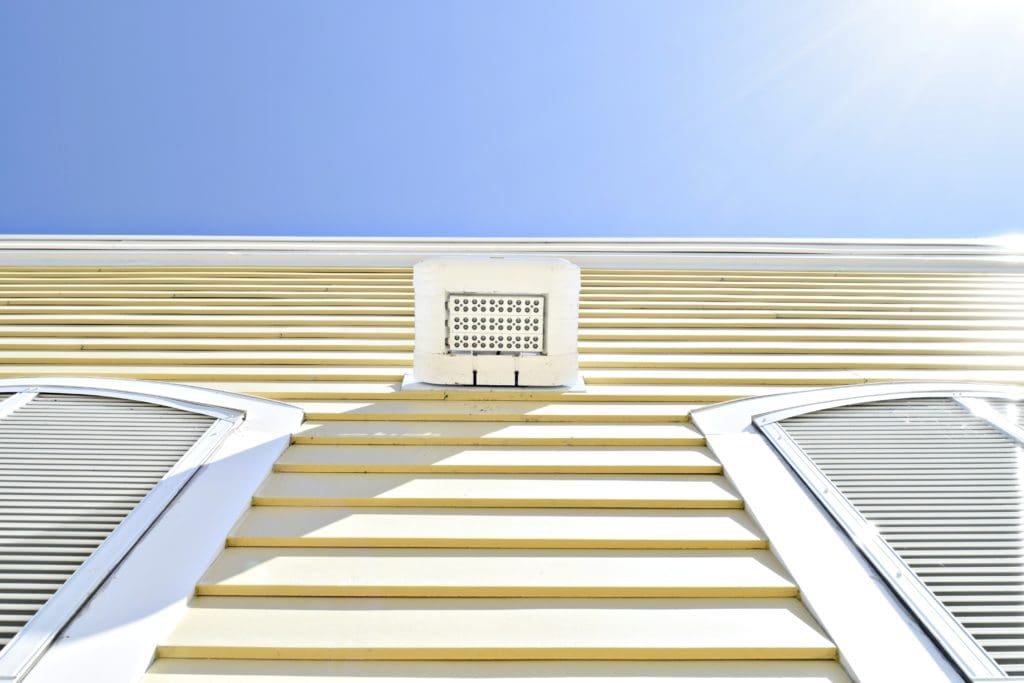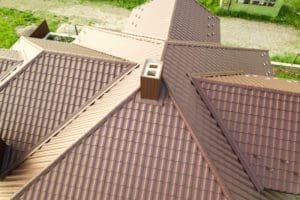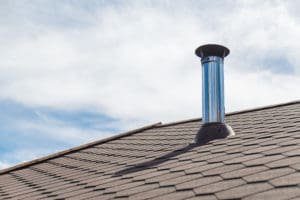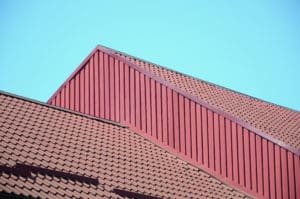Understanding The Role of Siding in Weather Resistance with High Point Roofing
Siding stands as a silent sentinel, guarding your building against the relentless forces of nature. It forms the outer layer, shielding your structure from rain, wind, temperature fluctuations, and other environmental adversaries. In this article, we will explore the pivotal role of siding in weather resistance, highlighting the diverse array of siding materials available. We will delve into how siding acts as a bulwark against rain and moisture, a guardian of temperature control, and a formidable barrier against the fury of wind and storms. Furthermore, we will dissect the factors influencing the weather resistance of siding, encompassing material quality, installation craftsmanship, and maintenance considerations. Lastly, we will offer insights into selecting the ideal siding tailored to your climate, with specific guidance for cold, hot, and humid regions.
Understanding the Essence of Siding Before we plunge into the depths of weather resistance, let’s commence with a primer on the fundamentals of siding. Siding refers to the material that enrobes a building’s exterior. It straddles the realms of both aesthetics and function, elevating the visual allure of the structure while concurrently providing an impervious shield against the capricious vagaries of weather. Siding is customarily affixed over the building’s sheathing, erecting a barrier that demarcates the interior from the external environment.
When embarking on the quest to select the most suitable siding material for your establishment, an array of factors merits contemplation. The prevailing climate of your locale, the architectural essence of your building, and your personal predilections each assume roles in the calculus to determine the optimal siding choice. Let’s embark on a deeper exploration of the diverse pantheon of siding materials.
A Panorama of Siding Materials The universe of siding materials is replete with an eclectic tapestry of choices, each weaving its unique tale of attributes. The ensemble of common siding materials encompasses vinyl, wood, fiber cement, stucco, and brick.
Vinyl siding is celebrated for its resilience and low maintenance proclivities. It stands as a stalwart bulwark against rot, fading, and insect intrusions, rendering it a favored selection among homeowners. Moreover, vinyl siding presents an artist’s palette of colors and styles, affording you the freedom to tailor the visual identity of your abode.
Wood siding wields a timeless, natural allure that confers warmth and character upon a building. It beckons the artisan’s brush with its potential for painting or staining to harmonize with your aesthetic vision. However, it demands a regimen of periodic maintenance to stave off decay and insect encroachments.
Fiber cement siding emerges as a paragon of durability, versatility, and low maintenance. This stalwart material defies rot, fire, and pest incursions, proffering an enduring and robust solution. Fiber cement siding is a chameleon, capable of adopting the appearances of wood, stucco, or masonry, affording you the liberty to breathe life into your architectural dreams.
Stucco and brick siding, while gracing your building with an elevated elegance, warrant a more substantial investment. Stucco comprises a fusion of cement, sand, and water that crystallizes into a resplendent, enduring finish. Brick siding, an embodiment of classic charm, stands as a paragon of timeless aesthetics, impervious to the erosions of time.
The Multifaceted Role of Siding in Building Dynamics Beyond its role as an aesthetic veneer, siding shoulders several pivotal functions in the tapestry of a building’s existence. It unfurls as an impervious guardian, rebuffing the relentless assaults of weather elements and stemming the tides of moisture, mold, and structural dilapidation.
In locales prone to copious rainfall or tumultuous temperature oscillations, siding emerges as the stalwart bulwark preserving the sanctity of the building’s interior. It seals the envelope of the edifice, curtailing the insinuations of moisture and averting potential damage.
Siding also assumes a mantle of insulation, conferring the gift of temperature regulation. It diminishes the loss of warmth during chillier epochs and thwarts heat infiltration during sizzling summers. By curtailing air leakage, siding augments energy efficiency, reducing the fiscal footprints of utility expenses.
Moreover, siding emerges as a sentinel against auditory intrusions. It shapes a tranquil, noise-defying cocoon, shielding the building’s inhabitants from the cacophonies of the external world.
In the quest for the perfect siding to grace your building, it becomes pivotal to not only appreciate its aesthetic splendor but also to fathom the pragmatic advantages it proffers. A discerning understanding of the panorama of siding materials and their multifaceted roles empowers you to craft a judicious choice in harmony with your needs and predilections.
How Siding Bestows Weather Resistance Now that we have plumbed the depths of siding’s essence, let us embark upon a voyage into the realm of its weather-resistant attributes. Siding marshals an ensemble of mechanisms, custom-fitted to thwart the stratagems of diverse meteorological foes.
Safeguarding Against Rain and Moisture Foremost among its attributes, siding stands sentinel against the tempestuous vagaries of rain and moisture. A well-constructed siding system, fortified with judicious flashing and moisture barriers, assembles a citadel that bars the incursions of water. It masterfully diverts water from the inner sanctum of the building, eroding the risks of moisture-driven damage, mold proliferation, and rot. The tenure of its resistance to moisture hinges profoundly on meticulous maintenance and vigilant sealing.
Insulation and Thermoregulation Siding assumes the mantle of insulation, dictating the ebbs and flows of temperature within the building. Insulated siding, as an exemplar, melds additional layers of insulating materials, supercharging energy efficiency and stemming the tide of thermal transference. This insulation eases the burden on heating and cooling systems, culminating in economic dividends. Furthermore, siding reigns as a bulwark against the excesses of temperature, forging a comfortable haven that reduces the dependence on heating and air conditioning contraptions.
A Shield Against Wind and Storms In regions where the winds howl and storms unleash their fury, siding stands as a steadfast sentinel, protecting the structure’s core. Siding materials fortified with formidable wind resistance and bolstered by unassailable installation techniques temper the perils of tempestuous gusts. Moreover, impact-resistant siding options, such as fiber cement or brick, raise an additional shield against the projectiles unleashed by ferocious storms.
The Alchemy of Siding’s Weather Resistance A myriad of factors orchestrates the symphony of siding’s weather resistance. To craft the paragon of resilience, one must embrace these factors when selecting the ideal siding material.
Material Quality and Endurance The weather resistance of siding hinges inexorably on the choice of material. Premier materials, such as fiber cement or brick, unfailingly emerge as paragons of durability and weather defiance when juxtaposed with their less illustrious counterparts. An investment in superior materials safeguards the longevity of siding, a guardian that diminishes the exigency for future repairs or replacements.
Installation Proficiency A tapestry of apt installation plays a pivotal role in ensconcing the weather resistance of siding. An installation marred by incompetence spawns vulnerabilities—pernicious lacunae or feeble seals—that dilute the siding’s resolve against meteorological onslaughts. Thus, an investment in seasoned professionals, versed in the arcane rites of installing a particular siding material according to industry best practices, yields manifold dividends.
Nurturance and Upkeep Regular care and upkeep resonate as the sine qua non for the sustenance of siding’s weather resistance. Consistent cleansing, inspection, and sealing assume the mantle of sentinels that thwart the forays of moisture intrusion, mold proliferation, and degradation. Adherence to the maintenance dictums prescribed by the manufacturer, coupled with the expeditious rectification of emergent issues, serves as a bastion that augments siding’s lifespan.
Choosing the Superlative Siding for Your Climate In the journey to select siding for your building, it is imperative to be in consonance with the climate that envelopes your abode. Varying climes usher distinct challenges, and the selection of the most judicious siding material and design can yield an enhanced synergy with weather resistance.
Deliberations for Frosty Climes Within the bosom of colder climes, siding must offer consummate insulation to curtail heat dissipation. Siding materials like insulated vinyl or fiber cement, garlanded with supplementary insulation layers, foster an environment of snug warmth. In addition, siding that boasts unyielding resistance to the tremors of freezing and thawing safeguards against fissures and fractures precipitated by temperature oscillations.
Considerations for Scorching Climes In the crucible of sweltering climes, siding unfurls as the maestro of heat management and UV deflection. Reflective materials or the adoption of light-colored siding can be a resolute ally in the endeavor to curtail heat absorption, resulting in a building that remains cool and inviting. Ventilated siding options, adorning themselves with built-in air conduits, kindle the currents of airflow that dispel heat from the structure.
Reflections for Humid Climes The embrace of humid climes introduces a distinctive set of trials, as surfeit moisture can beget the specter of mold and decay. Siding materials that emerge as paragons of inherent moisture resistance, such as fiber cement or stucco, can be stalwart allies in mitigating these challenges. Furthermore, an ecosystem of prudent ventilation and drainage systems stands as a parapet, guarding against the specter of moisture engendered behind the siding.
In denouement, a comprehension of the role of siding in weather resistance stands as a paragon of sagacity in the maintenance and safeguarding of a building’s integrity. By prudently selecting the optimal siding material, exacting flawless installation standards, and cognizant consideration of climate-specific factors, one can indelibly enhance the weather resistance qualities of their structure. A conscientious embrace of periodic maintenance and proactive measures to address burgeoning issues in a timely fashion ensures a building’s unassailable fortitude against the most relentless meteorological adversaries. Thus, through these measures, the durability, comfort, energy efficiency, and longevity of your structure remain unwaveringly assured.





